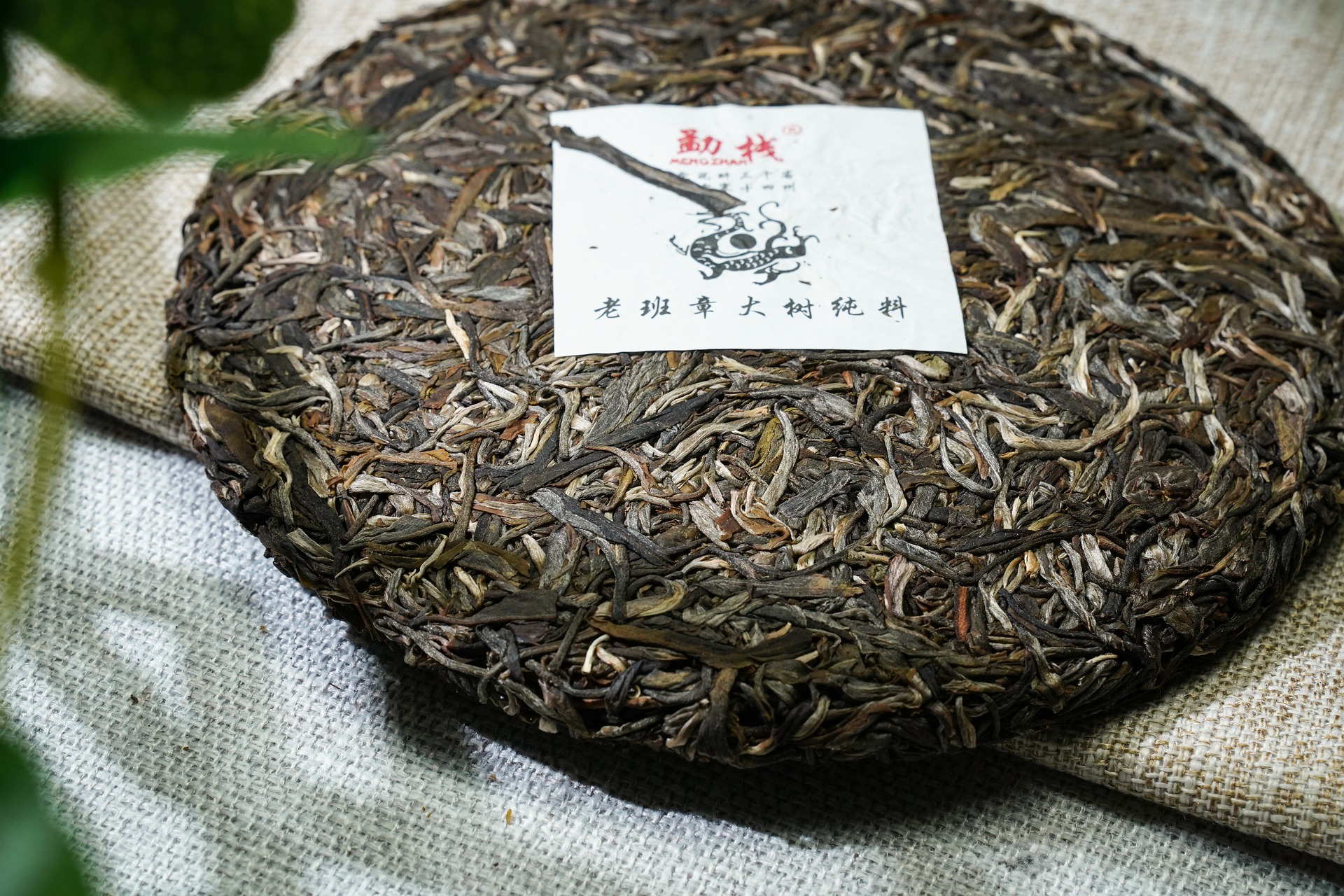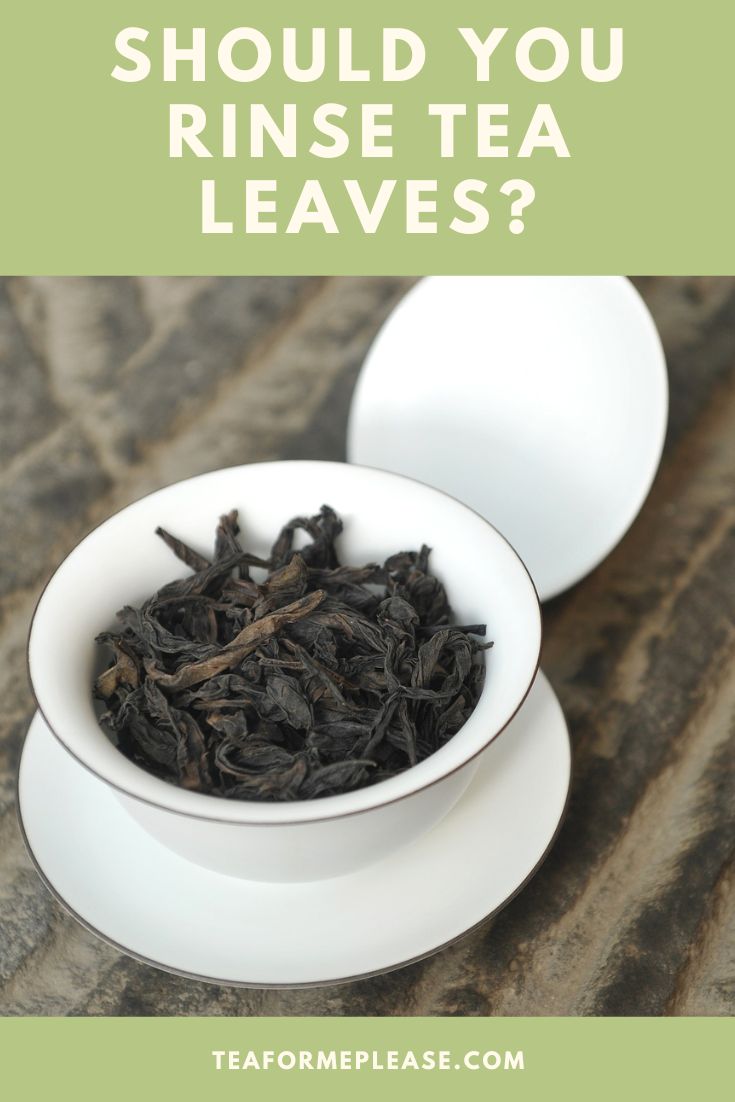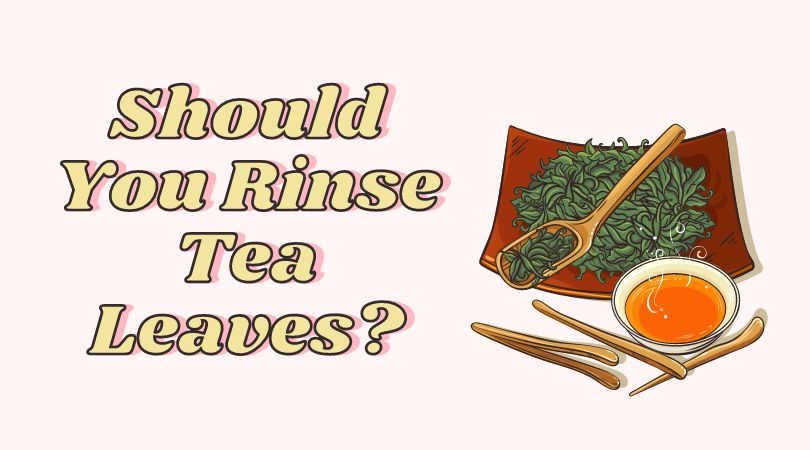One thing that is frequently debated in the tea world is whether or not you should rinse tea leaves before drinking. In this post, I’ll discuss why it is that people rinse tea leaves and which varieties benefit the most from it. If you aren’t already familiar, this is a step that is often done as part of gongfu tea brewing. It’s a personal choice and it’s essential to keep in mind that there is no such thing as a proper way to make tea.
How to rinse tea leaves
Rinsing your tea leaves is pretty much what it sounds like. First, add the tea leaves to your brewing vessel. Water is then poured on the tea leaves and quickly poured off after about 5-20 seconds. The rinse is often discarded by pouring it over a tea pet. It can also be poured into the cups and other pieces of teaware to warm them before serving. Having a tea tray with drainage holes makes it easier to discard the rinse but you can also use a separate waste water bowl.
Why do people rinse tea?
People usually rinse tea leaves for one of two reasons, removing impurities or helping the tea leaves open up. While a quick hot water rinse can help the tea to open up, the efficacy of rinsing tea is not something that has been studied much (at least outside of China). What this means is that we have very little proof that rinsing tea will actually do much to protect us from any harmful substances. One puerh focused study did recommend discarding the first brew for safe drinking.
I’ve seen a lot of talk about rinsing to remove pesticides. I think it is important to keep in mind that not all pesticides are created equal. Some are not water-soluble. Others are absorbed into the plant and are not present on the leaves. If you consider that is nearly impossible to remove pesticide residue from fruits and vegetables, it becomes pretty clear that a quick dip in hot water will not accomplish very much when it comes to tea.

What varieties of tea should be rinsed?
Tea varieties that are tightly rolled or compressed will benefit the most from rinsing. Those with more broken leaves infuse much more quickly so rinsing is likely to produce a much lighter flavor. The type of tea you are drinking is a also big factor in whether or not the leaves should be rinsed. It is not a common practice to rinse tea when brewing in a western style. It also not typical to rinse teas from regions outside of China or Taiwan. Japanese green teas in particular do not benefit from rinsing because the leaves are already broken down by the steaming process.

Should you rinse your tea?
This may not be the answer that you are looking for but there is no right or wrong way. Everything in tea is a personal choice. Do what works for you and do not let anyone tell you otherwise!
I did an informal poll in my Instagram stories and the results were pretty much split down the middle.
I do not rinse tea leaves for most of the teas that I drink. The one exception might be very tightly compressed puerh. Over time I’ve noticed that there just didn’t seem to be a big difference whether the leaves were rinsed or not. The first infusion may be a bit lighter, but it can still have a lot of worthwhile flavors and aromas.
It’s also a bit like throwing out the baby with the bathwater if you rinse white and green teas. The tender buds of the tea plant are covered in tiny hairs called trichomes. These affect the mouthfeel and add a surprising amount of sweetness to the cup. Seriously. Try brewing them on their own if you ever have the chance! You might just be surprised by how much taste is there.
In what cases do you ever rinse tea leaves? Let me know why or why not in the comments below!
Pin It For Later!

This post was originally published on January 20th, 2020. It was revised and updated on August 28th, 2023.
Help Support This Site

Support my work in tea by joining my Patreon community. For $2-$5 a month you’ll receive access to exclusive behind-the-scenes content, my private Discord server, surprise quarterly packages, and more!

Haha it’s funny I am reading your article today because I had that conversation with a tea friend just yesterday ^^ Personally, I don’t rinse tea… I only rince Puerh when brewed gong fu cha style. And I’ve only been doing since I read the article you mention ^^’ Thanks for this article, it’s a great topic (and a very controversial one :p).
pour moi ,il est indispensable de rincer les feuilles pour éviter un choc thermique trop important, rincer les feuilles avant permet de les préparer à l’infusion en chassant les petites poussières ainsi que la théine .
Interesting. I usually only rinse puer. I use a fine mesh strainer over my cup/pitcher for the first few infusions almost all the time. Your comment about trichomes has made me realize I might be missing out on something.. I’m going to stop using that strainer for a it to see what transpires. Thanks!
Make that I strain every type of tea, but need to stop that for at least the greens and whites to see how the experience differs.